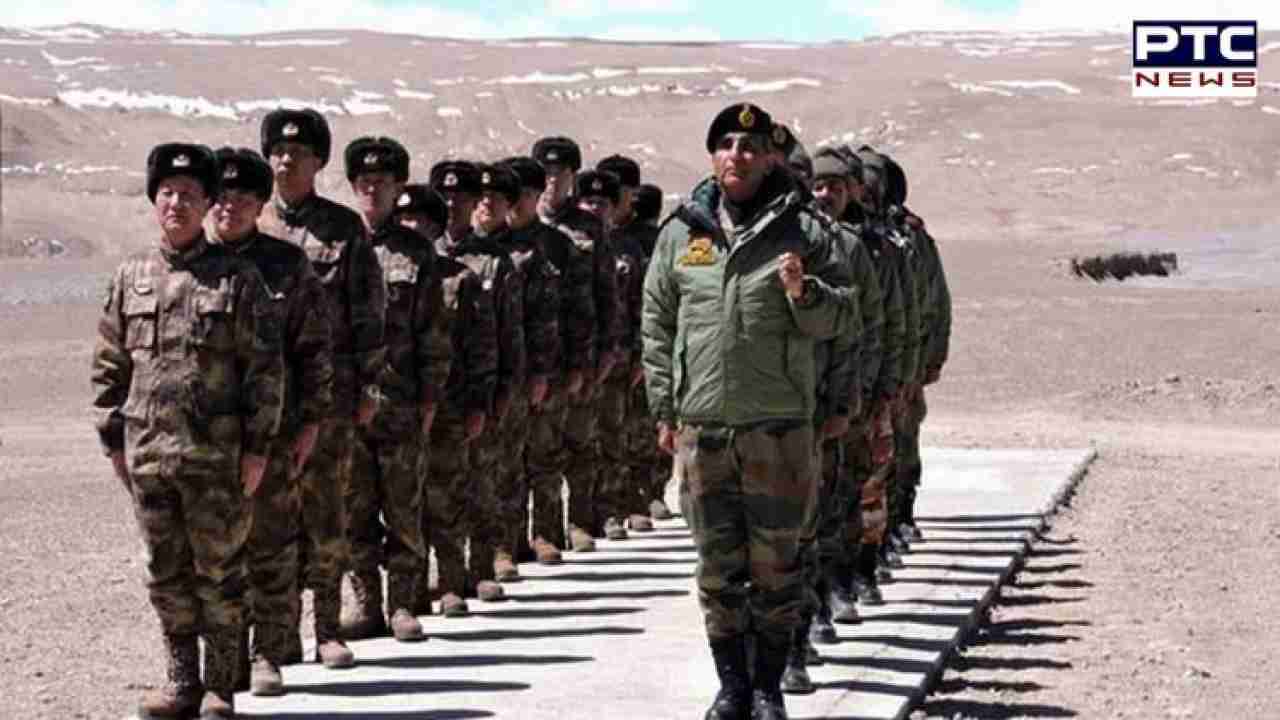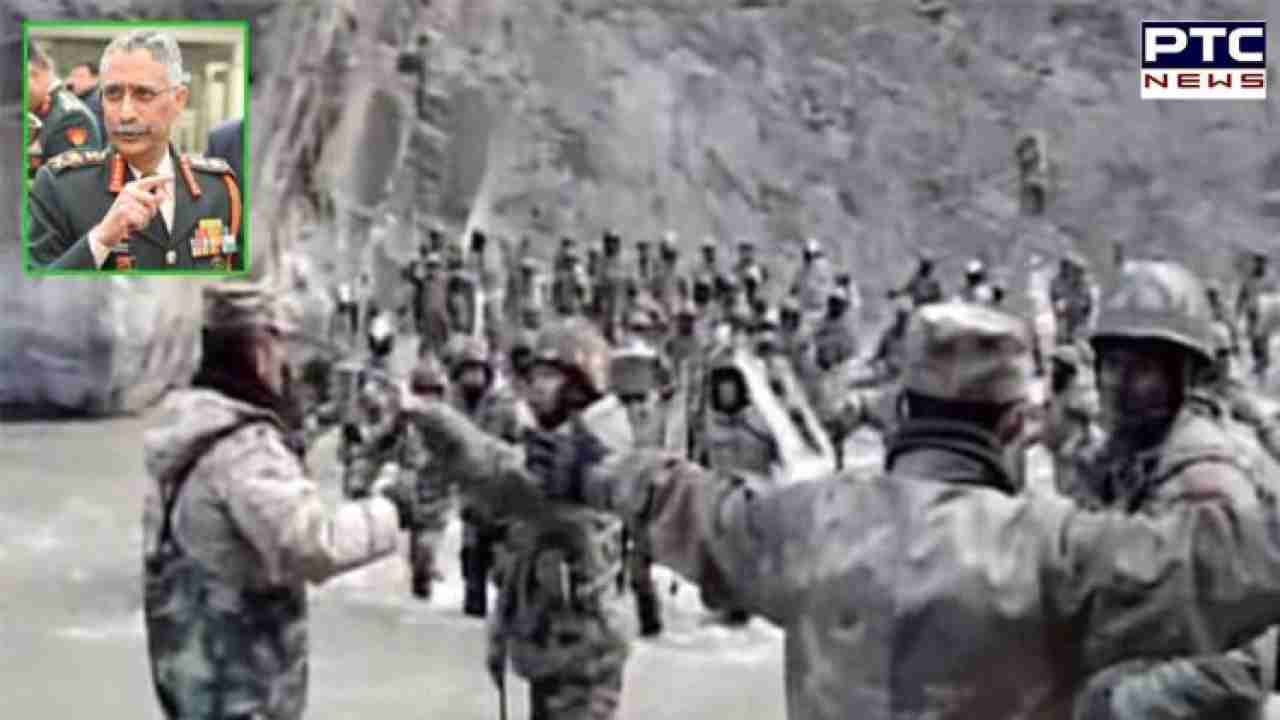

'Unforgettable for Xi Jinping': General Naravane on the India-China clash in Galwan
PTC News Desk: In his memoir, 'Four Stars of Destiny,' former Indian Army Chief General Manoj Mukund Naravane vividly recounts the pivotal 2020 Galwan clash, underscoring India's stand against what he terms the "neighbourhood bully" China. The incident, which occurred on June 15, 2020, in the Galwan Valley of eastern Ladakh, resulted in the loss of twenty Indian soldiers and an undisclosed number of Chinese troops, significantly escalating tensions between the two nations.
General Naravane's narrative exposes China's aggressive tactics, citing its consistent use of "wolf-warrior diplomacy" and incremental territorial assertions without facing any repercussions, even at the cost of human lives in places like the South China Sea and its intimidation of smaller neighbors like Nepal and Bhutan.

The memoir emphasises India's stance in challenging China's hegemony, highlighting that it took the Indian Army's courage to stand up against the encroaching Chinese advances and convey a resounding message to the world—enough is enough. The repercussions of the Galwan clash were multifaceted, serving as a catalyst for India to bolster its military preparedness along the Line of Actual Control (LAC) and prompting a significant reevaluation of India's overall response to Chinese provocations.
General Naravane underscores the significance of June 16, coincidentally the birthday of Chinese President Xi Jinping, as a day that will likely linger in Xi's memory due to the People's Liberation Army (PLA) sustaining "fatal casualties" for the first time in over two decades. Reflecting on the Galwan clash, General Naravane acknowledges it as one of the most somber days in his extensive military career, highlighting the gravity of the situation and the immense loss incurred.
During his tenure as the Army Chief, spanning from December 31, 2019, to April 30, 2022, General Naravane navigated the complexities of the Chinese border challenges and spearheaded comprehensive reform initiatives aimed at bolstering the combat capabilities of the Indian armed forces.
The sequence of events leading to the Galwan Valley clash, as detailed by General Manoj Mukund Naravane, sheds light on the escalating tensions between the Indian Army and the Chinese People's Liberation Army (PLA) in the eastern Ladakh region.
The genesis of the clash lay in the Chinese PLA's refusal to dismantle two tents they had erected at Patrolling Point 14 (PP-14). General Naravane elucidates that despite repeated requests from the Indian Army to remove these structures, the PLA consistently altered their stance, from pleading for more time to claiming it was beyond the purview of ongoing discussions. Sensing the lack of intent to de-escalate, the Indian Army made the decision to establish their own tents in the vicinity.
While discussions at other points along the border—such as PP-15 and PP-17A—resulted in troops withdrawing to agreed-upon distances, mitigating the potential for confrontations, PP-14 painted a different picture. The attempted establishment of Indian tents met with aggressive resistance from the Chinese side, leading to a violent turn of events.

Colonel Santosh Babu's endeavor to defuse the mounting tension met with resistance and ultimately violence from the PLA. This altercation triggered a chaotic escalation, with both sides swiftly reinforcing their positions under the cover of darkness. The confrontation intensified throughout the night, evolving into a tumultuous exchange involving additional troops.
Despite being armed, neither side resorted to firearms, instead engaging in physical altercations using batons, clubs, and hurling stones. General Naravane highlights the PLA's advantage in maneuverability due to superior connectivity, enabling them to deploy troops using armored personnel carriers. This tactical maneuvering altered the balance of power in their favor, intensifying the clash.
The Galwan clash, characterised by a series of refusals, counteractions, and an eventual violent exchange, unfolded amidst attempts at negotiations but ultimately spiraled into a night of chaotic confrontation between Indian and Chinese troops.
The tragic loss of Indian Army soldiers during the Galwan Valley clash, as recounted by General Manoj Mukund Naravane, unfolded into a distressing narrative of courage and sacrifice amidst a harrowing ordeal.
In the aftermath of the tumultuous night, General Naravane, at 1:30 am on June 16, urged then Northern Army Commander Lt Gen YK Joshi to respond resolutely, emphasizing the need to make the People's Liberation Army (PLA) pay for their aggressive actions. However, the break of dawn revealed an unfavorable reality.
As the morning light spread across the Galwan Valley, a grim tally of the toll emerged. Despite some soldiers trickling back, the true extent of the tragedy surfaced—five brave jawans had succumbed to their injuries during the chaotic melee. However, the head count revealed a more haunting revelation—several soldiers were missing.
General Naravane's account encapsulates the harrowing plight of those soldiers who, disoriented or briefly detained by the PLA without provisions or medical aid, struggled to return to their base. Tragically, 15 soldiers, battling the combined adversities of injuries and harsh mountainous conditions, succumbed to the ravages of their ordeal, including hypothermia.
Describing it as one of the darkest chapters in his illustrious career, General Naravane confronts the immense anguish of losing 20 brave men in a single day. Despite his usual stoicism in the face of adversity, the weight of this profound loss proves challenging to bear.
The Galwan Valley clash, etched in the annals of India-China conflicts, stands as a poignant reminder of the sacrifices made by these valiant soldiers in the line of duty, marking one of the gravest military confrontations between the two nations in recent history.
General Manoj Mukund Naravane's revelations regarding Chinese casualties during the Galwan clash paint a haunting picture of the hidden toll suffered by the People's Liberation Army (PLA) amid the contentious standoff.
Despite China's admission of only five fatalities among its soldiers, General Naravane's account unveils a darker narrative. Indian soldiers held captive by the Chinese forces bore witness to a distressing scene—being kept exposed to the elements while witnessing multiple bodies retrieved from the river. The ordeal didn't end there; these captives faced renewed brutality each time bodies were recovered.
"The sheer brutality of their actions spoke volumes of the magnitude of their losses," General Naravane reflects. Initially, China denied any casualties, only conceding months later to a minimal count of four or five, including their commanding officer.
General Naravane references reports by Australian researchers and Russian sources, notably TASS, painting a vastly different picture of the toll suffered by China. These independent reports suggested significantly higher casualties, with figures ranging from at least 38 to as many as 45 deaths within the PLA ranks. Such figures aligned with intelligence reports from various quarters, including the United States.
The crisis in eastern Ladakh triggered a pivotal shift in the Indian Army's strategy, prompting a significant realignment of key units towards the northern front in response to the aggressive Chinese maneuvers. This recalibration aimed to bolster India's readiness and fortify defenses in the face of escalated tensions.
General Naravane advocates for a "non-aggression" pact between India and China, emphasizing the need for such an accord until a comprehensive resolution of the broader boundary dispute is reached. He perceives this agreement as pivotal in reinstating trust, fostering de-escalation, and facilitating the withdrawal of forces from the region.
The revelations of the hidden toll on the Chinese side and the strategic repositioning of the Indian Army underscore the complexities and consequences of the Galwan clash, urging the need for diplomatic initiatives to restore stability and trust along the contentious border.
- With inputs from agencies
